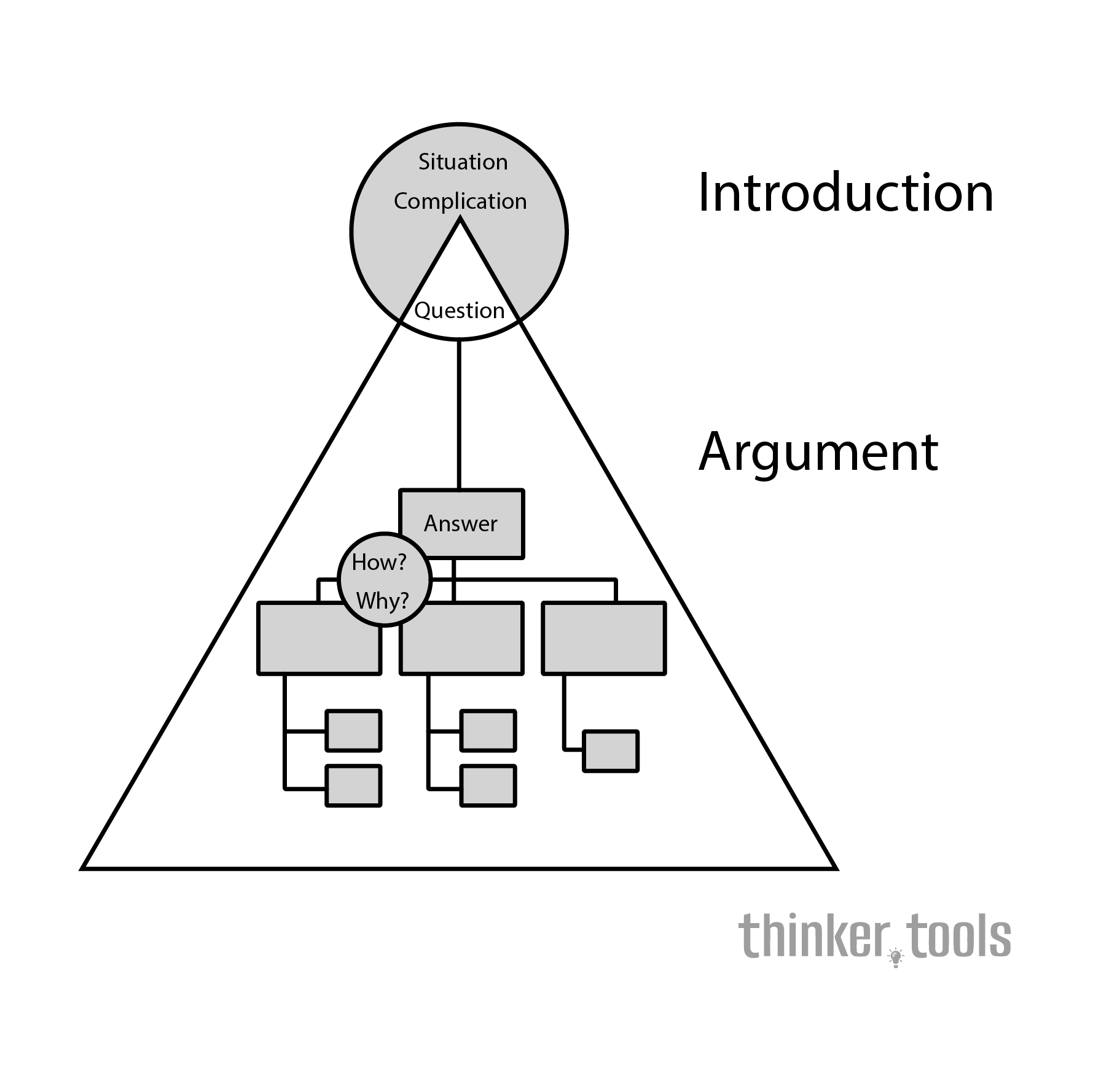
What is the Pyramid Principle?
The Pyramid Principle is a communication framework that structures information in a hierarchical, logical way, with the main point at the top supported by grouped and ordered ideas below. Think of it as building an upside-down pyramid where your key message forms the peak, and supporting arguments create increasingly detailed layers beneath.
This powerful approach ensures your audience grasps your main point immediately, then chooses how deeply to explore the supporting details. In our information-saturated world, the Pyramid Principle has become essential for anyone who needs to communicate complex ideas clearly and persuasively.
The History and Origin
Barbara Minto developed the Pyramid Principle in the 1960s while working at McKinsey & Company, the prestigious management consulting firm. As the firm's first female consultant, Minto noticed that even brilliant analyses often failed to persuade because they were poorly structured. Clients would get lost in details before understanding the main point.
Minto spent years refining her approach, eventually codifying it in her groundbreaking book "The Pyramid Principle: Logic in Writing and Thinking" (1987). McKinsey adopted her method as its standard for all written communications, and it quickly spread throughout the consulting industry and beyond. Today, it's taught in business schools worldwide and used by executives, consultants, and professionals across every industry.
How to Use the Pyramid Principle
The Pyramid Principle rests on four key components:
1. Start with the Answer Lead with your main point, conclusion, or recommendation. Don't make your audience wait or guess what you're trying to say. This "answer first" approach respects your reader's time and attention.
2. Group Supporting Ideas Organize your supporting points into logical groups. Each group should contain ideas that belong together and support the level above. Typically, you'll have 2-5 groups at each level.
3. Order Within Groups Arrange ideas within each group using one of four logical orders:
- Time order: Chronological sequence (first, second, third)
- Structural order: Breaking down components (geographical, organizational)
- Degree order: Ranking by importance, size, or priority
- Deductive order: Major premise, minor premise, conclusion
4. Support with the MECE Principle Ensure your groups are MECE - Mutually Exclusive and Collectively Exhaustive. Each idea should belong to only one group (mutually exclusive) and together they should cover all relevant points (collectively exhaustive).
The SCQ Framework To introduce your pyramid, use the Situation-Complication-Question framework:
- Situation: Context your audience already knows and accepts
- Complication: The problem, change, or opportunity
- Question: What should be done?
- Answer: Your main point (top of the pyramid)
Practical Examples
Example 1: Business Recommendation Traditional approach: "Our sales have been declining in the Northeast region. We've analyzed customer feedback and found service issues. Competitors have been gaining market share. We've looked at various options..."
Pyramid Principle approach: "We should immediately invest $2M to upgrade our Northeast distribution center.
This will address three critical issues:
- Reduce delivery times from 5 days to 2 days (matching competitors)
- Improve order accuracy from 94% to 99%
- Lower shipping costs by 15%
Each improvement directly addresses the service gaps causing our 12% revenue decline in the region."
Example 2: Project Status Update Top of pyramid: "The project will launch on time despite current challenges."
Supporting level:
- Technical development is ahead of schedule
- Budget concerns have been resolved
- Stakeholder approval process is accelerating
Details under each:
- Technical: Core features complete, testing phase beginning early
- Budget: Additional funding approved, cost savings identified
- Stakeholders: New review process cuts approval time by 50%
Benefits and Life Improvements
1. Clarity of Thought The discipline of organizing ideas pyramidally forces you to clarify your own thinking. You can't build a strong pyramid on fuzzy logic. This process often reveals gaps in reasoning or analysis before you communicate.
2. Increased Persuasiveness By leading with your main point and supporting it logically, you make it easier for others to follow and accept your reasoning. Your arguments become more compelling because they're easier to understand and remember.
3. Time Efficiency Both you and your audience save time. You spend less time writing because you have a clear structure to follow. Your audience spends less time reading because they quickly grasp your main points and can choose their level of detail.
4. Better Decision-Making In organizations, the Pyramid Principle accelerates decision-making by presenting recommendations clearly with supporting rationale readily accessible. Executives can make informed decisions faster.
5. Enhanced Professional Credibility Clear, logical communication marks you as a thoughtful professional. Whether in emails, presentations, or reports, using the Pyramid Principle demonstrates respect for your audience and mastery of your subject matter.
6. Reduced Miscommunication By organizing information logically and completely (MECE), you minimize the chance of misunderstandings. Your audience is less likely to miss key points or misinterpret your message.
7. Improved Problem-Solving The framework helps break complex problems into manageable components. By structuring your analysis pyramidally, you can tackle each piece systematically while keeping the big picture in view.
Conclusion
The Pyramid Principle transforms the way we communicate complex ideas. In a world where attention is scarce and information overload is common, the ability to present ideas clearly and logically is invaluable. Whether you're writing an email, preparing a presentation, or structuring a report, the Pyramid Principle ensures your message gets through.
By mastering this framework, you join a tradition of clear thinkers and effective communicators who understand that how you say something is often as important as what you say. Start practicing with your next communication - lead with your main point, support it logically, and watch how much more effective your messages become.